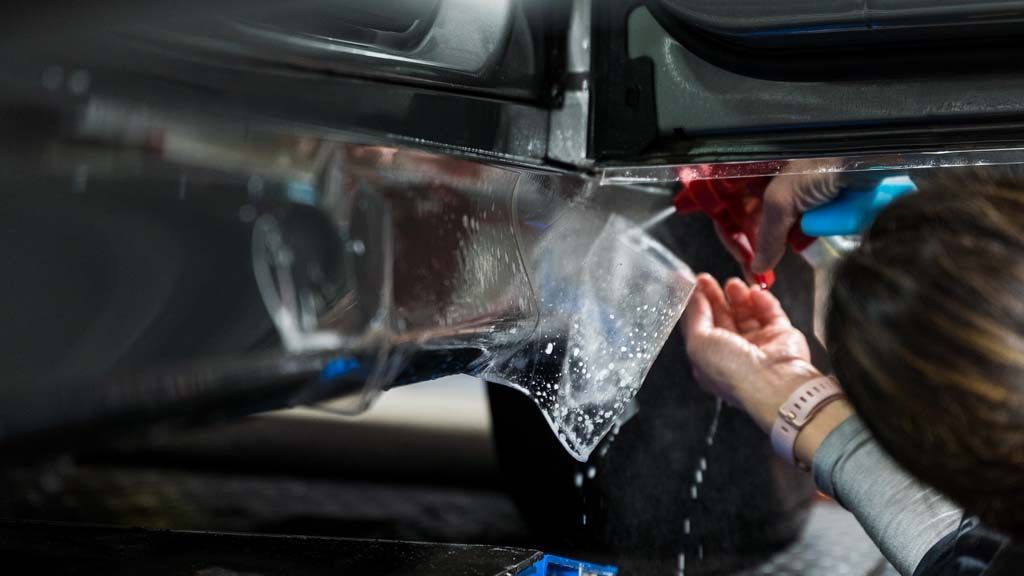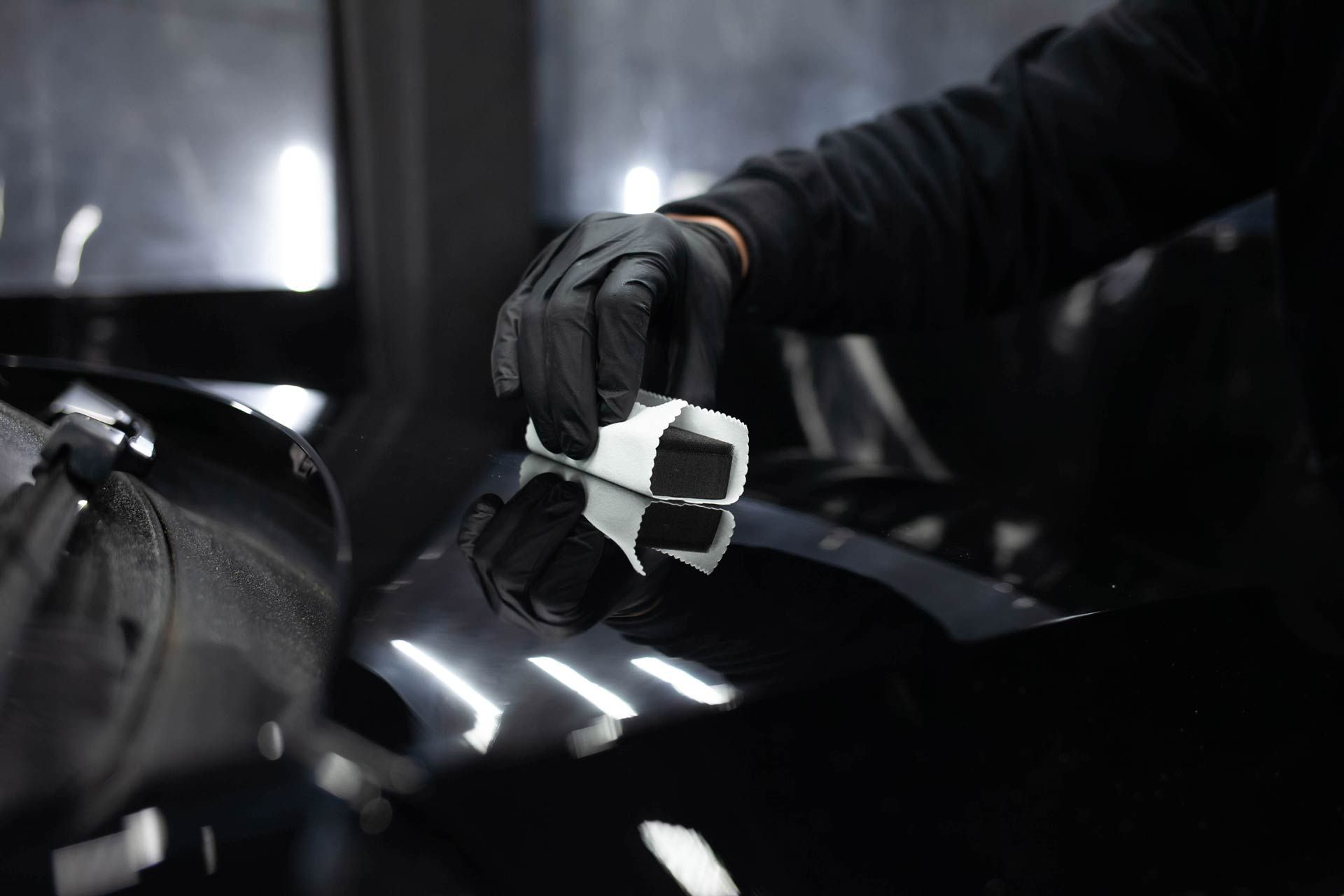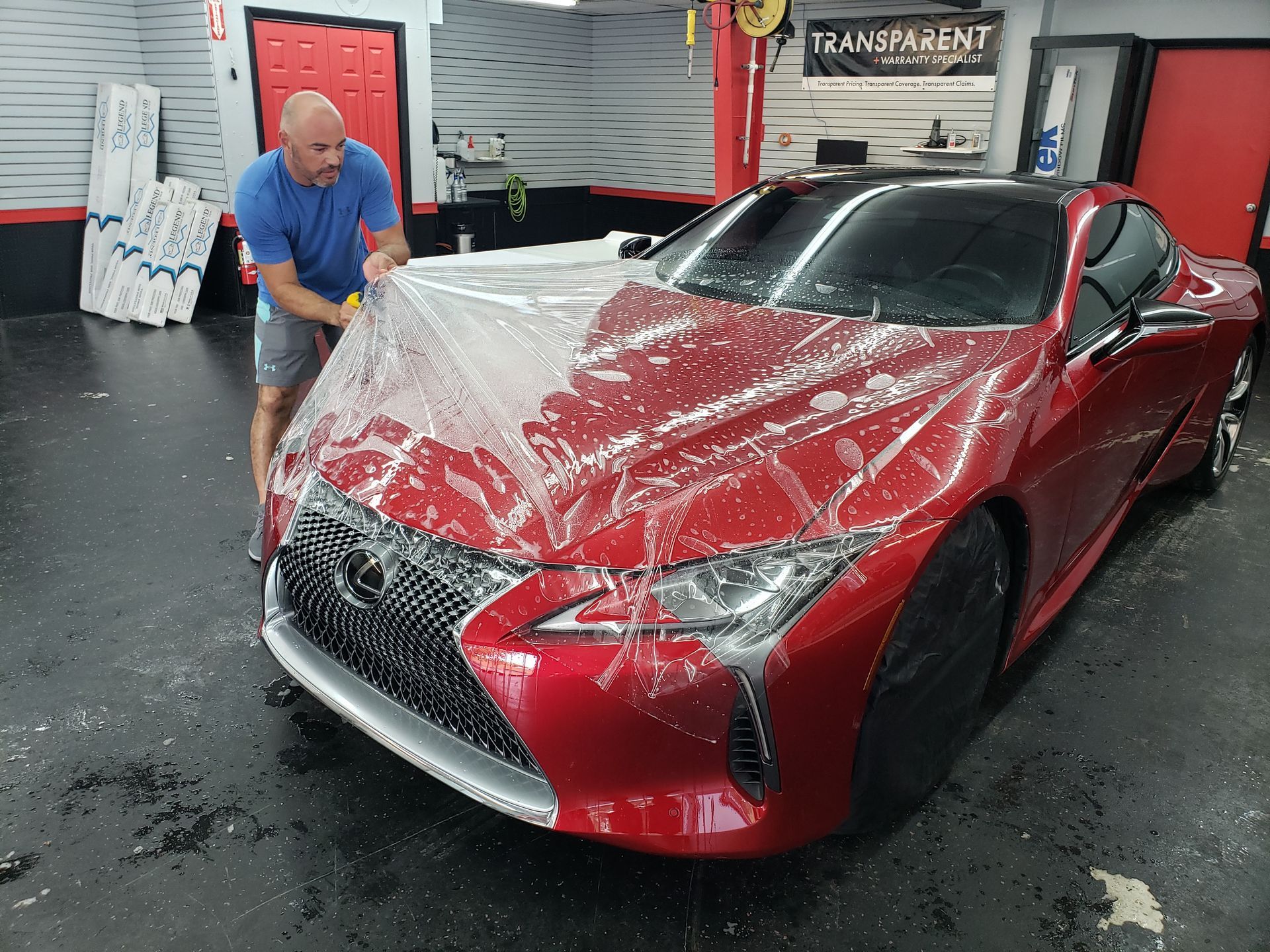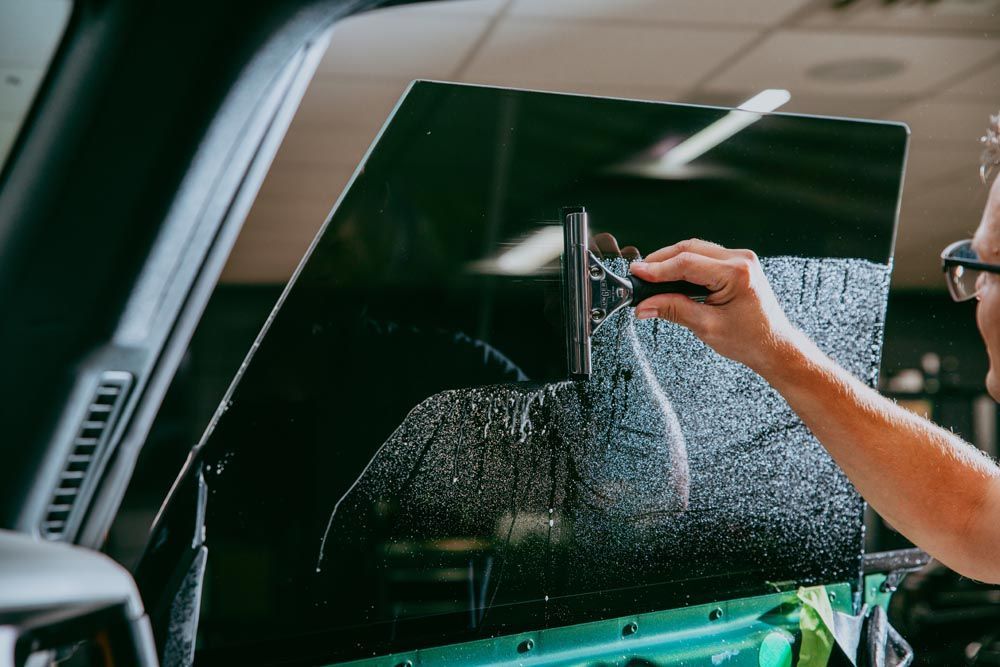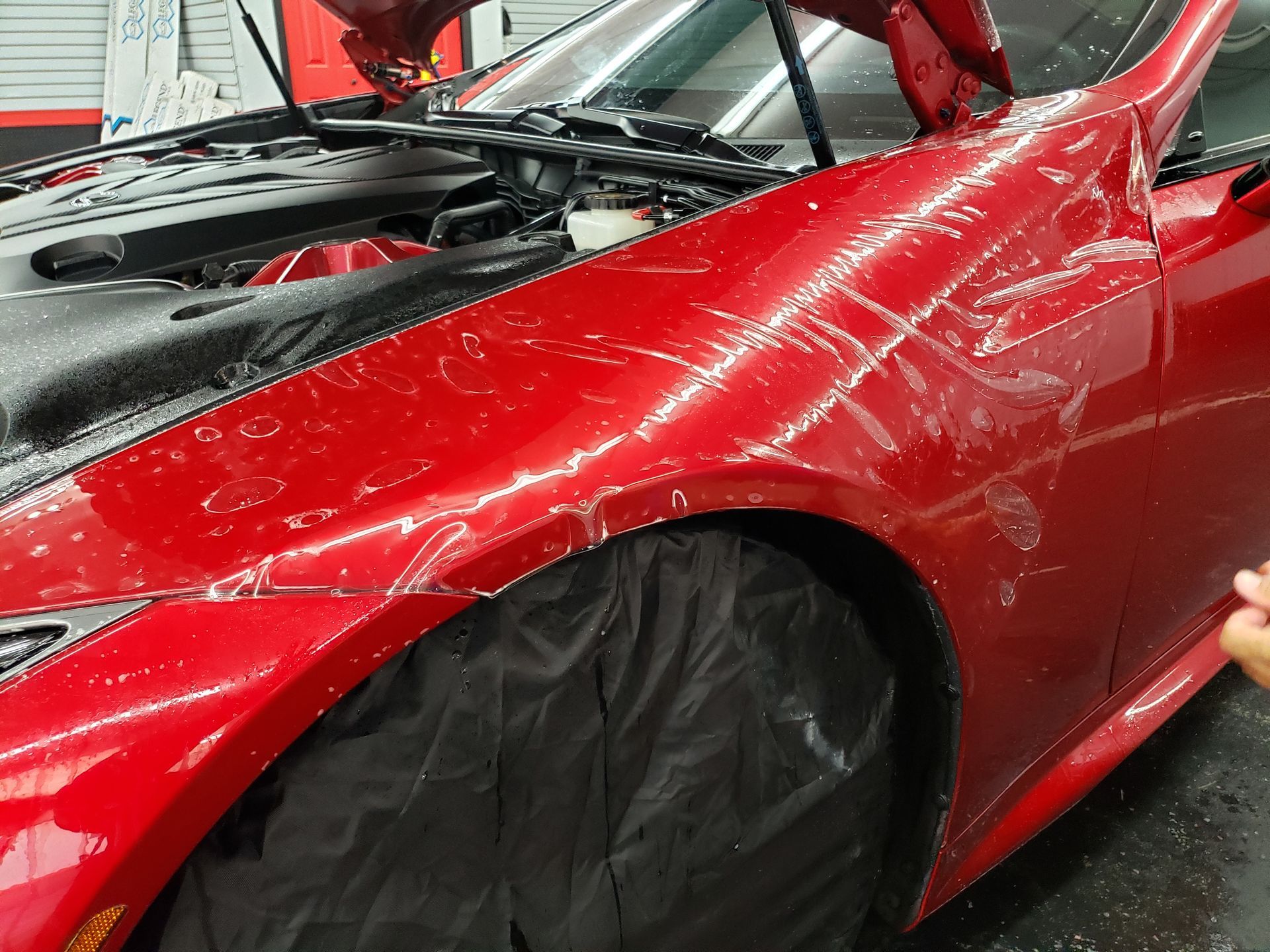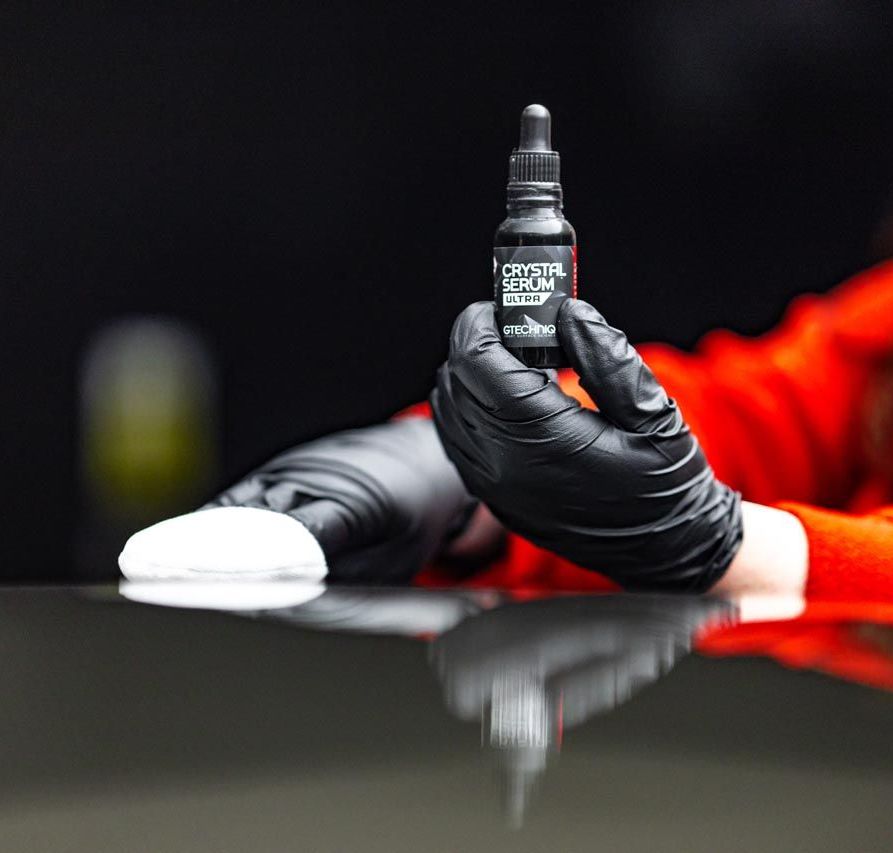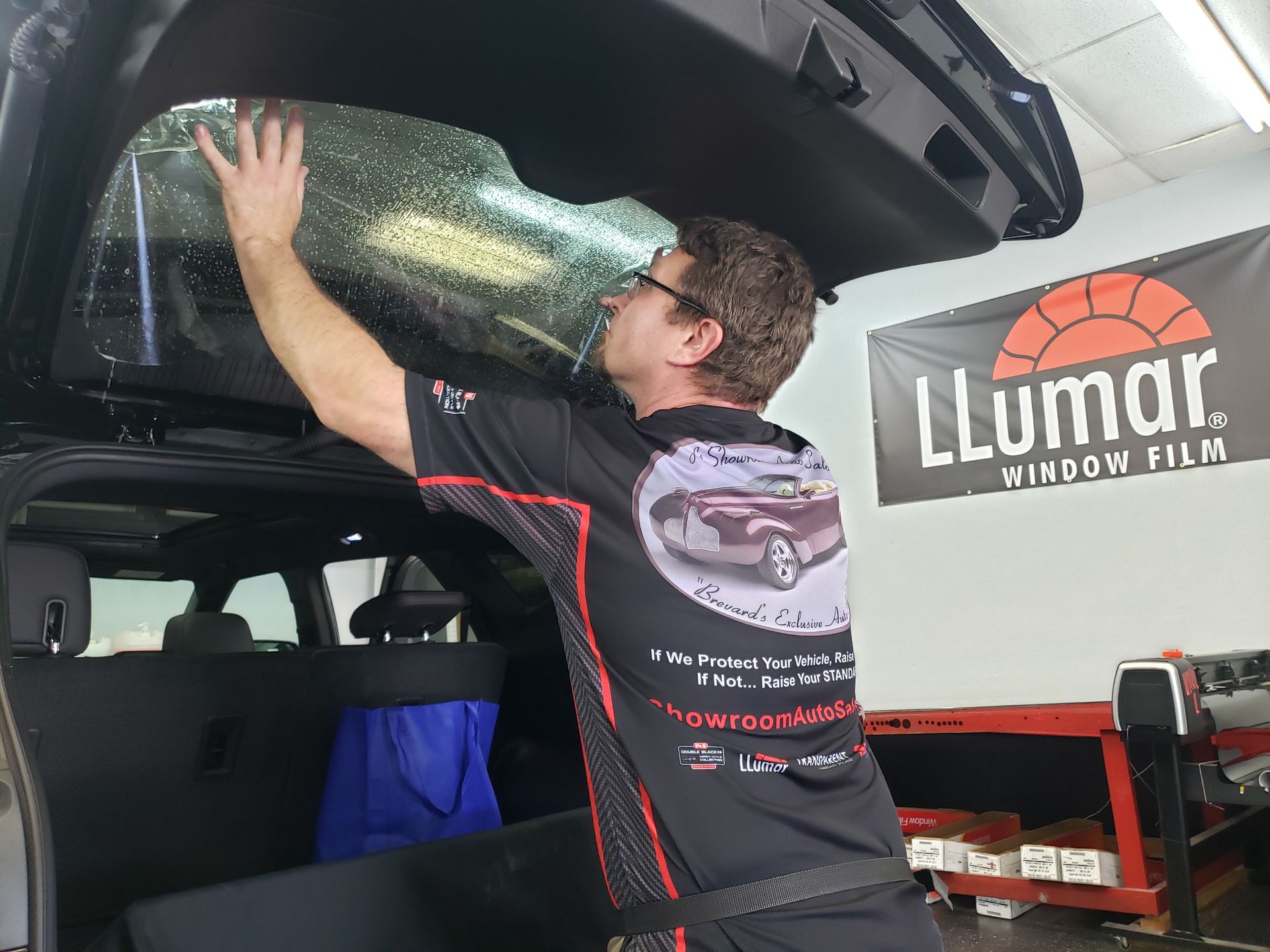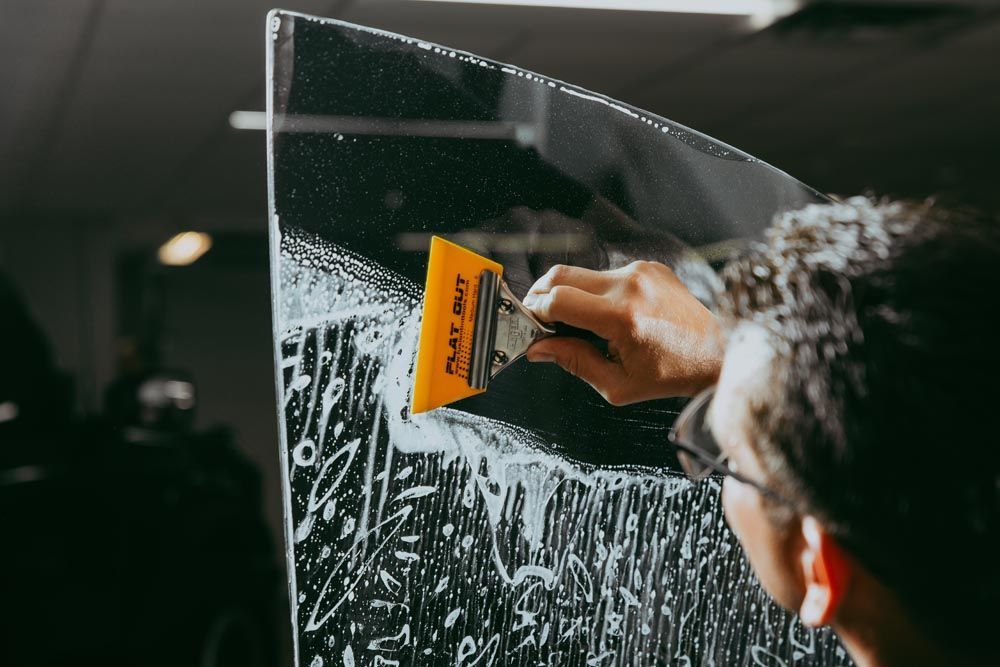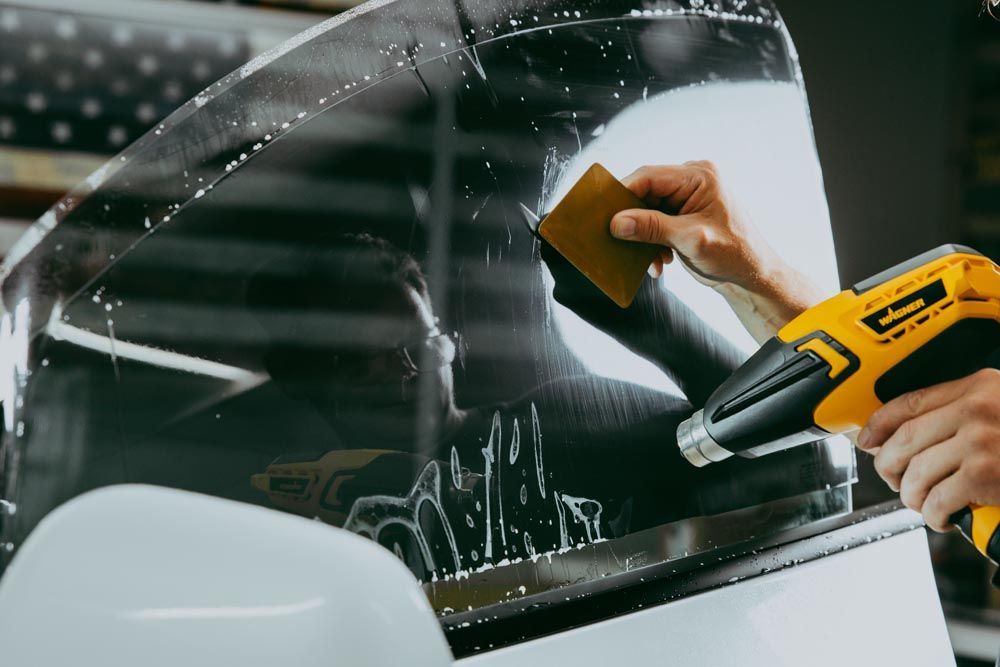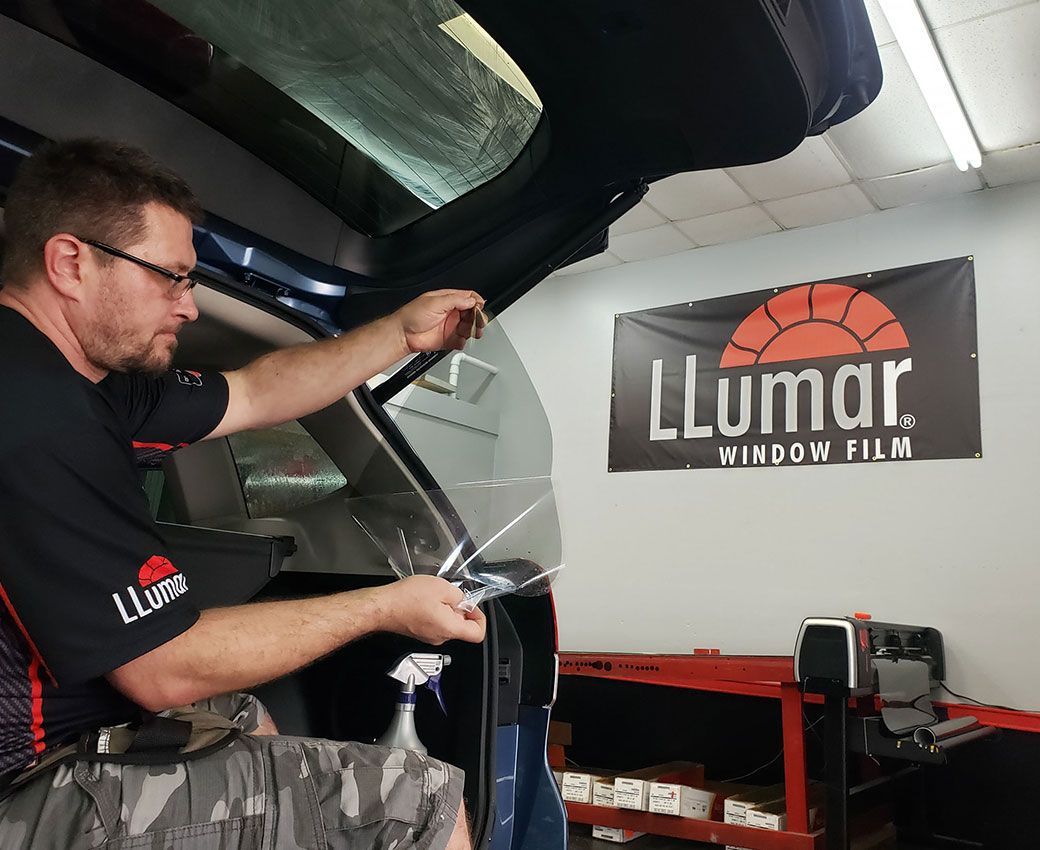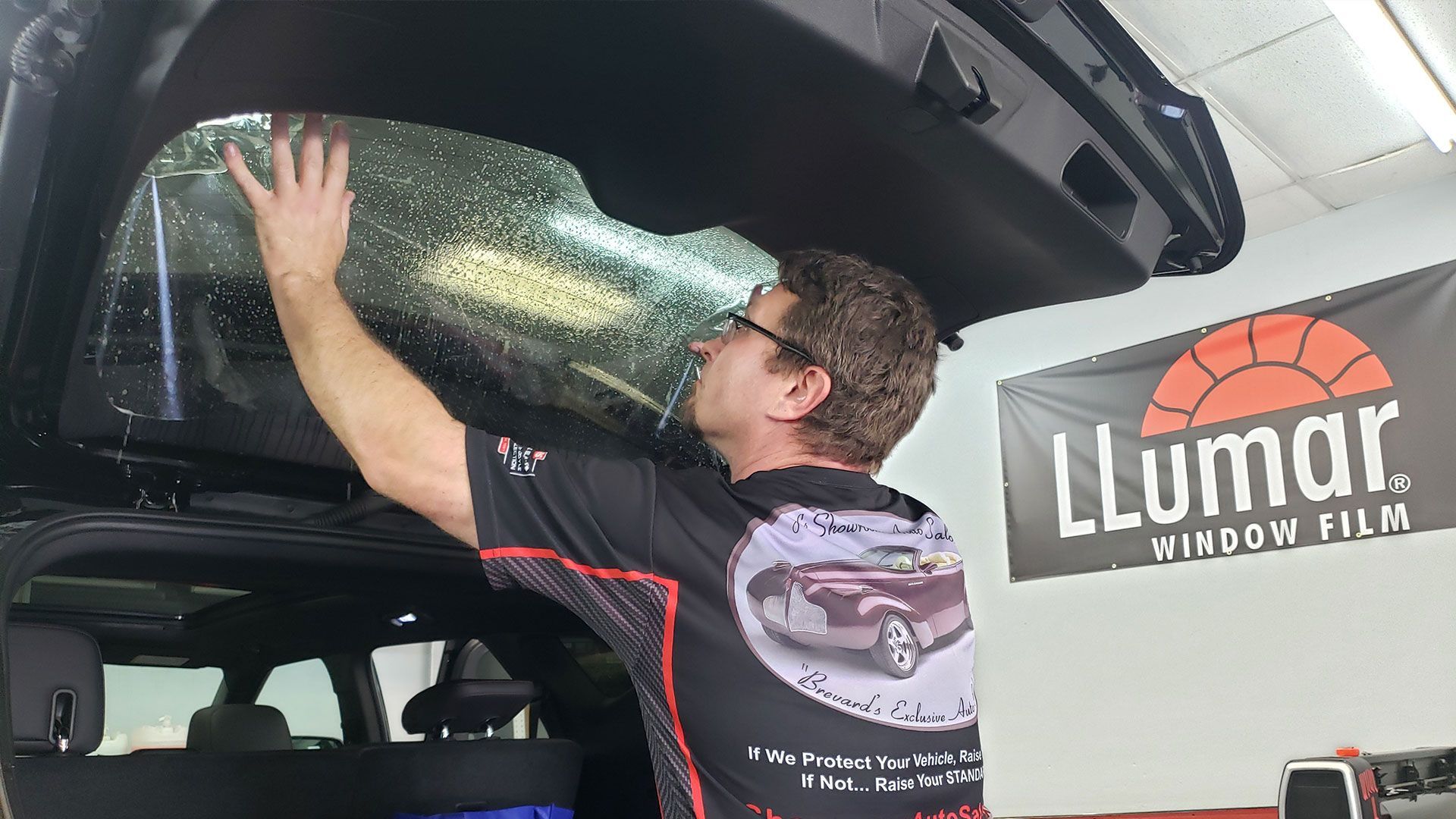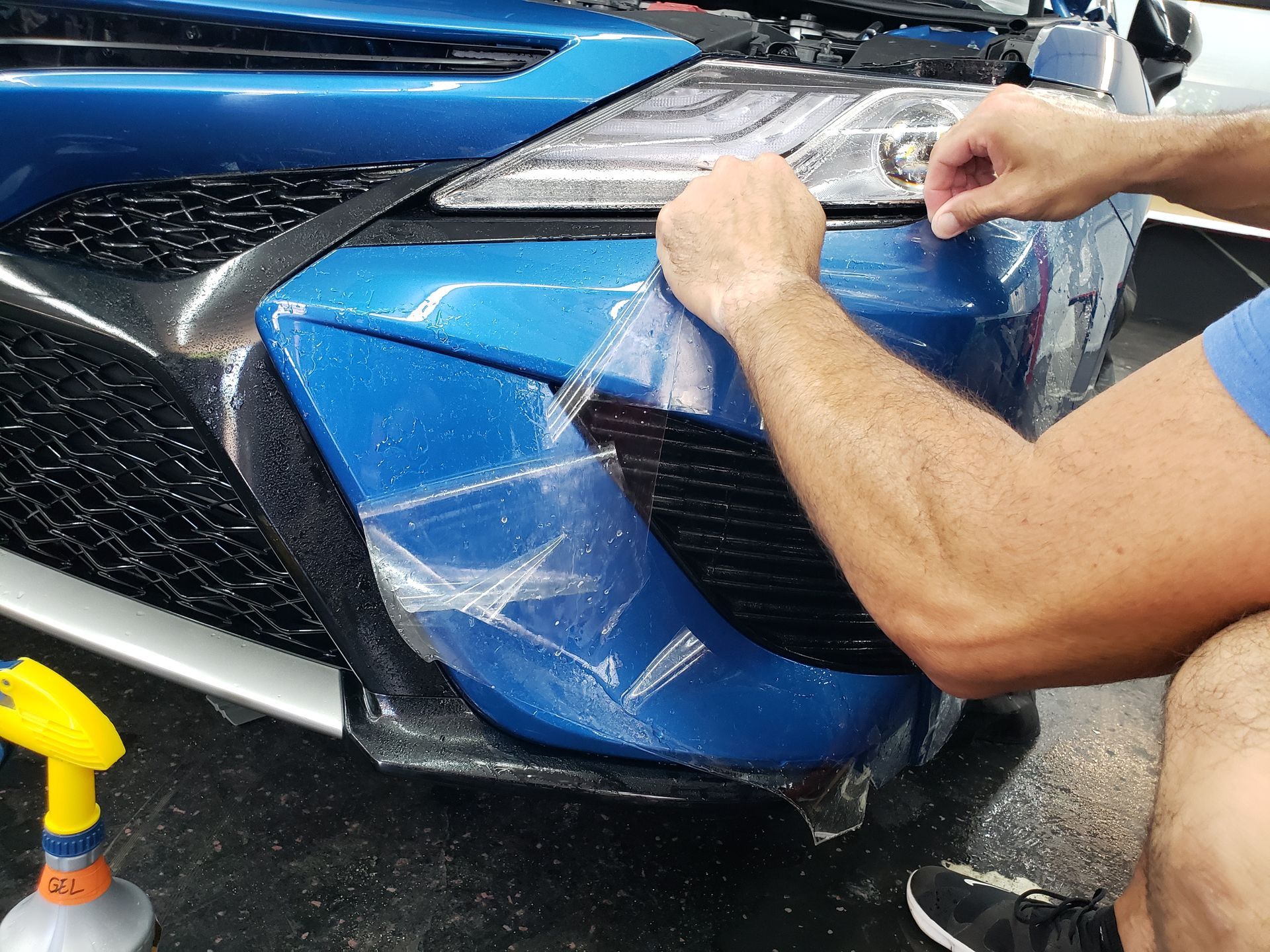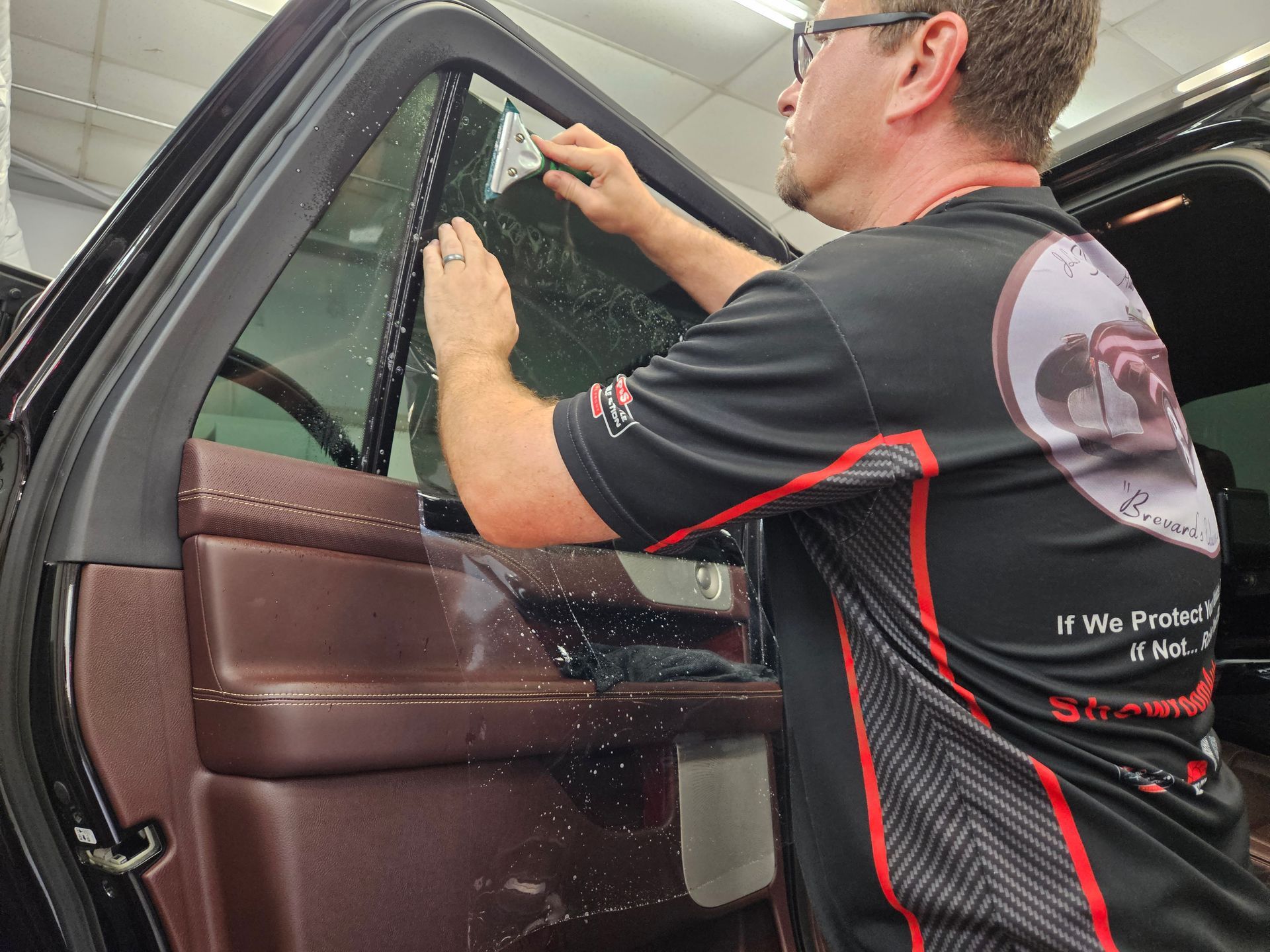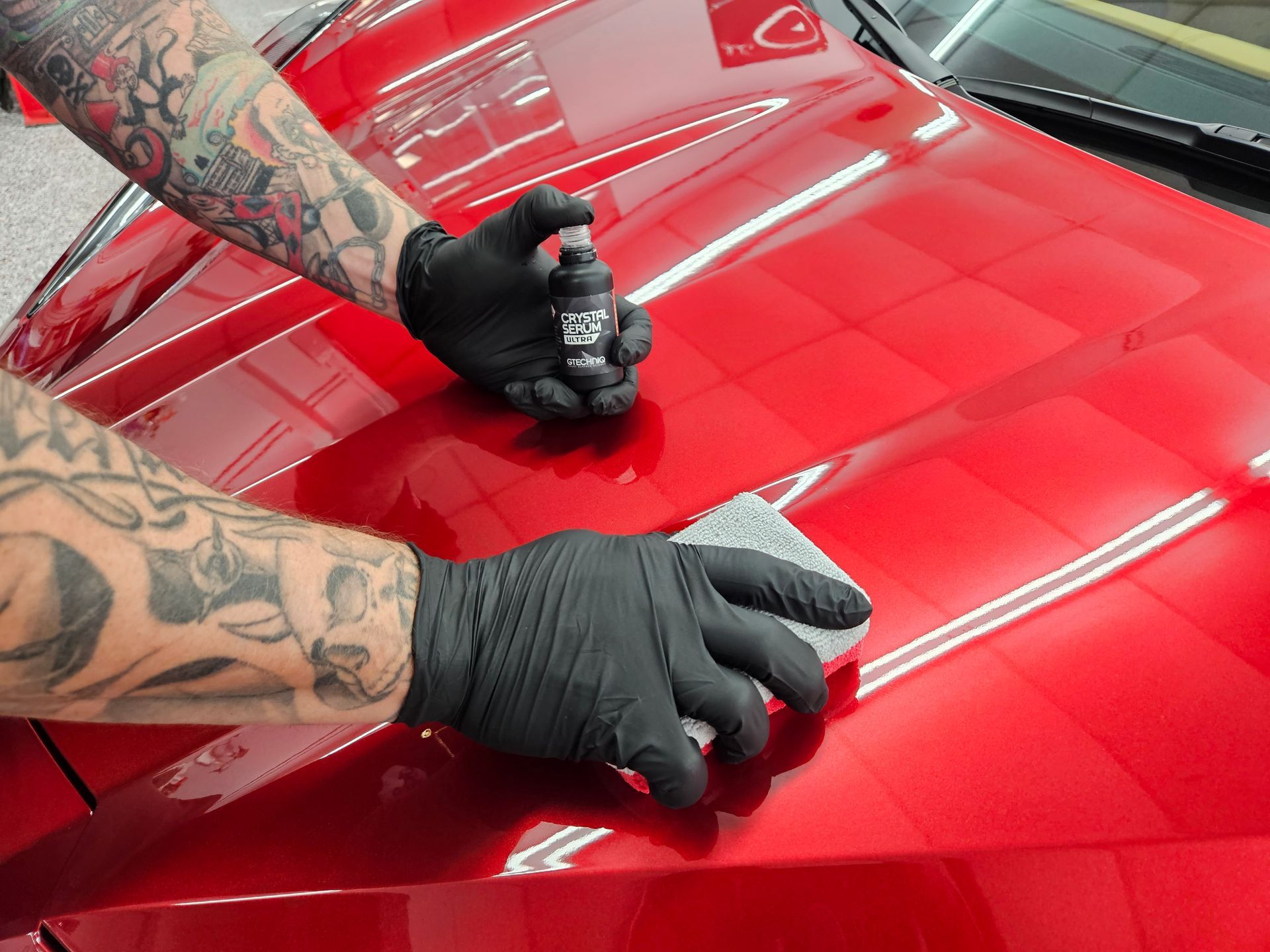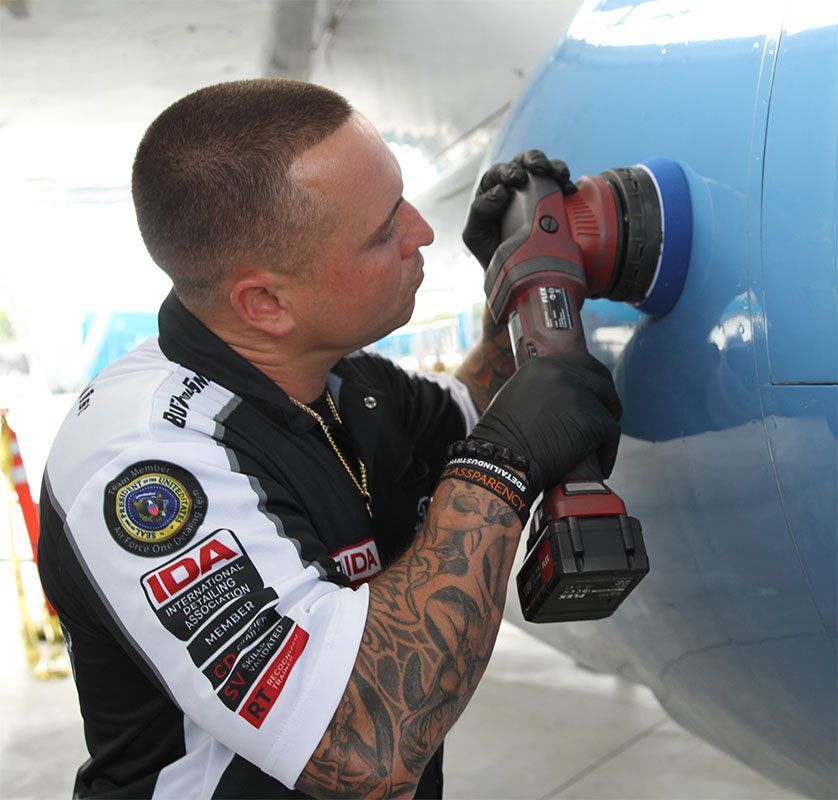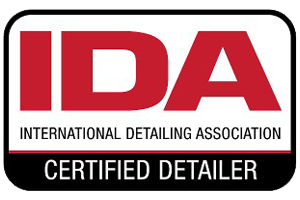Connection Between Window Tinting and Car Value Retention: Benefits for Resale Value
When considering how best to protect and enhance the value of your vehicle, window tinting often springs to mind as a practical and stylish solution. Many car owners might not realize that this simple upgrade can play a significant role in preserving their vehicle's value over time. Not only does window tinting provide an added layer of protection against harmful UV rays and heat, but it also improves comfort during those sweltering summer days and elevates the car's appearance. With so many benefits tied to something as straightforward as applying a film to your windows, it's worth diving into how this choice can affect your car's resale value down the line.
Window tinting positively impacts car value retention by protecting interior materials from UV damage, enhancing comfort by regulating temperature, and improving the vehicle's overall aesthetic appeal. These factors contribute to preserving the car's condition and attractiveness to potential buyers during resale.
Enhancing Car Value with Window Tinting
One of the most important benefits of window tinting is its ability to protect the interior of your vehicle from UV damage. As you might know, prolonged exposure to sunlight can cause materials like leather and upholstery to fade and crack, ultimately leading to a decline in aesthetic appeal. Tinted windows help block up to 99% of harmful UV rays, which not only preserves interiors but can also contribute to maintaining the vehicle's overall market value.
But that's not all; this protection maintains aesthetics and plays a vital role in retaining comfort. Picture this: you park your car under the hot sun, and when you return, the interior feels like an oven. That discomfort can detract from the driving experience. By reducing heat buildup through window tinting—especially with high-quality ceramic options—your vehicle’s cabin remains cooler, making every drive significantly more pleasant. This temperature control isn't just about comfort; it's particularly beneficial when it comes time to resell your vehicle. A cooler car interior during the summer months makes the car more attractive to potential buyers, who are likely swayed by their initial impressions.
Aside from comfort and aesthetics, there are security advantages linked to window tinting that can bolster resale value. Tinted windows act as a deterrent for thieves since darker glass obscures valuables inside the vehicle. When potential buyers see a well-maintained car with tinted windows, they may feel reassured knowing that their belongings will be less visible and less tempting to steal. The statistics support these claims: studies show that cars with professional window tinting can retain up to 10-15% more of their original value compared to untinted vehicles. Notably, vehicles equipped with high-quality window films can sell for an average of $1,000 to $2,000 more than similar models without tint. Investing in window tinting offers significant returns on your vehicle investment.
It’s also essential to consider how professional installation plays a critical role in maximizing these benefits. While some automotive enthusiasts might opt for DIY kits, a poorly applied tint can lead to issues like bubbling and peeling—undesirable characteristics that could turn off potential buyers down the line. Therefore, ensuring you work with certified professionals who understand local tint regulations is imperative for both quality and compliance.
Another key aspect frequently overlooked is the aesthetic value that tinted windows offer. A well-executed tint job enhances the overall look of a vehicle, giving it a more polished appearance that stands out in the marketplace. First impressions matter during resale; many prospective buyers find themselves drawn to cars with clean lines and cohesive design elements that tinted windows help achieve.
Considering all these factors underscores the multifaceted benefits of window tinting, extending well beyond visual appeal. The layers of protection against environmental harm invite us into a deeper discussion about how such modifications shield vehicles from harsh elements while enhancing usability and longevity.
Protection Against UV and Heat Damage
The sun’s relentless rays can turn a cozy car into an uncomfortable oven, especially during the summer months. Not only does the rising temperature make your journey less pleasant, but it directly impacts the longevity of your car’s interior. High temperatures combined with harmful UV rays can cause materials like leather and fabric to crack, fade, and degrade over time. Fortunately, window tinting is an effective remedy to this issue.
When applied correctly, window tints serve as both shield and barrier. These films are designed to block not just the visible sunlight but also the infrared radiation that generates excessive heat inside your vehicle. Ceramic tints, for example, have particularly high heat-rejection capabilities—they can reduce solar heat by up to 50%, leading to a markedly cooler cabin temperature and less strain on your air conditioning system.
Maintaining a cooler interior means that you’re not only maximizing passenger comfort but also minimizing the stress placed on your vehicle’s cooling system, which can lead to better fuel efficiency. Interestingly, studies find that cars equipped with window tint can maintain temperatures that are 30–50% cooler compared to those without any tint. This significant temperature control enhances the driving experience while reducing daily wear and tear on your vehicle's interior settings, which can cost hundreds to replace if damaged by relentless sunshine.
In addition to temperature regulation, quality window tints offer substantial protection against UV exposure. Tints can block up to 99% of harmful UV rays, making them an essential investment for both health and vehicle preservation. Regular occupancy in a non-tinted car leaves passengers vulnerable to skin damage, particularly in areas exposed to direct sunlight through the windows.
The protective benefits extend beyond mere aesthetics; they contribute significantly to long-term maintenance. For instance, prolonged UV exposure could lead to interior degradation; as much as 50% of it is attributed to solar impact. Consequently, investing in window tint becomes a strategic choice for protecting upholstery—from cracking leather seats to fading dashboards—thereby maintaining value over time.
Imagine buying that five-year-old car I mentioned earlier; it looks as pristine as the day it was purchased, largely due to effective UV protection from tinted windows. Conversely, consider how a similar model lacking such protection might show signs of age much earlier than expected—faded colors and worn interiors can deter potential buyers and significantly diminish resale value. As we explore further, it's clear that window tinting not only shields from sun damage but also elevates the vehicle's visual appeal by enhancing its overall aesthetics.
Boosting Vehicle Aesthetics
One of the primary reasons many car owners turn to window tinting is the undeniable boost in their vehicle's aesthetics. Tinted windows offer a sophisticated, polished look that elevates even older cars, creating an impression of modernity and luxury. Consider how a classic black sports car can transform with darker tints, asserting dominance on the road, or how a family SUV may benefit from a subtler shade that rounds off its design without overshadowing practicality.
Aesthetic Transformation
The array of options available makes choosing a tint exciting yet crucial. Tints are not one-size-fits-all; they come in multiple shades and finishes tailored to enhance any vehicle’s inherent design.
For instance, lightly tinted windows can provide a sleek appearance while maintaining a sense of openness inside the cabin. Conversely, darker tints create an air of mystery and sophistication. Imagine cruising down the street in a car where every detail blends seamlessly; this unity can make your vehicle feel like an extension of your personal style.
However, aesthetics aren’t merely about visual improvements; they also contribute to perceived value in a resale market that increasingly values the overall appearance of a car. Understanding these elements can help you better appreciate the impact on your investment and future decisions as you continue to explore options available in this realm.
Quality Tint: Choosing the Right Product
Not all window tints are created equal. This truth becomes evident when you notice that some lower-quality materials might bubble, peel, or simply fail to provide the protection promised. A high-quality tint not only maintains its aesthetic appeal over time but also performs its intended functions effectively. For vehicles like the popular 2023 Silverado High Country, where owners often seek enhancements to both appearance and functionality, investing in quality becomes paramount.
One investment worth considering is ceramic or carbon-based tints. Though they may carry a higher price tag upfront, these options excel in heat rejection and UV protection. Most importantly, they avoid using metallic films that can interfere with electronic devices such as GPS systems or mobile phones. Essentially, this choice translates into a comfortable ride while ensuring your vehicle's tech remains operational.
Considerations for Quality
- Heat Rejection: Look for tints offering high heat rejection rates, ideally upwards of 50%. This feature is particularly valuable in states with hot summers or for those who park outside frequently. The less heat trapped inside your vehicle, the more comfortable your drive.
- UV Protection: Seek out products touted for substantial UV shielding properties. This not only protects your skin from harmful rays but also helps maintain your interior’s material integrity by reducing sun damage.
- Durability: Make sure to choose tints renowned for their ability to endure various weather conditions without peeling or discoloring. Durability equates to longevity—no one wants to invest time and money on a tint that won't last.
- Warranty: A good warranty can save you from future expenses should the product fail prematurely. Opting for products with warranties often indicates confidence from manufacturers regarding the quality of their materials.
Choosing the right quality tint has a directly correlative impact on the resale market value of the vehicle; by ensuring your chosen tint offers aesthetic and functional enhancements now, you're securing potential value retention later. As we examine the intricate relationship between these enhancements and actual market performance, we can uncover deeper insights into value appreciation among buyers.
Impact on Resale Market Value
Window tinting isn't just about aesthetics or comfort; it can create a significant advantage when reselling your vehicle. When buyers see a car adorned with high-quality window tints, they often perceive it as a well-cared-for investment. It signifies that the owner has gone the extra mile to protect the vehicle from harmful elements, which is particularly attractive to prospective buyers looking for longevity and value.
The buyer benefits are clear: tinted windows not only contribute to a vehicle's luxurious appearance and privacy but also offer practical advantages. They provide UV protection, reducing wear and tear on leather and fabric interiors while maintaining a cooler cabin temperature, thus creating a more comfortable driving experience. This leads to less fatigue on hot summer days, making the car more enjoyable for both the driver and passengers alike.
Many car detailing experts agree that vehicles equipped with quality window tint are perceived as valuable investments. A recent survey noted that over 30% of potential buyers recognize tinted windows as an enhancement to the car’s overall value. Moreover, beyond enhancing comfort and luxury perceptions, window tinting can directly influence resale market dynamics. According to industry experts, cars with expertly applied tints can see their resale value increase by 5-10%. This percentage may seem modest, but it can translate into hundreds or even thousands of dollars when selling a vehicle. For instance, a car valued at $20,000 could fetch between $1,000 to $2,000 more when titrated appropriately. Another critical aspect is how tinted windows play a role in protecting the integrity of your vehicle over time.
Longevity and Care
The longevity of your vehicle's interior materials is one area where window tinting shines brightly. We often forget about underlying damage until it's too late. Exposure to sunlight can fade upholstery and cause synthetic materials like dashboards to crack due to heat. Tinted windows act as a barrier against UV rays—less fading means decreased wear and tear over time. This preservation aids in maintaining not just appearance but also resale value.
When you consider the additional benefits of regulating cabin temperature, you realize that this feature contributes to better fuel efficiency—a compelling selling point in today's market where rising gas prices constantly loom large in buyer considerations. Drivers might be dissuaded from purchasing a vehicle that they think will strain their wallet at the pump; thus, effective window tinting addresses this concern smartly.
As you assess the myriad advantages associated with investing in professional window tinting, know that it serves as an investment—both for your vehicle’s aesthetic appeal but more importantly for its functional lifespan and resale potential. You’re not just investing in style; you are securing peace of mind for the future financial health of your vehicle. With these benefits in mind, let’s explore how maintaining the condition of your vehicle’s interior and paint can further enhance its long-term value.
Longevity of Vehicle Interior and Paint
Keeping a car looking newer for longer is a significant concern for most owners. Window tinting provides a shield against exterior stressors that can degrade both the interior and paint over time. When you invest in window tints, you're not just enhancing your car’s look; you're providing armor that protects your investment.
Interior Preservation
Think of tinted windows as sunscreen for your vehicle. Just as sunscreen shields your skin from harmful rays, window tints block approximately 99% of UV rays, preventing them from penetrating the glass and reaching your car's interior. This UV protection is crucial, especially for leather seats, which are prone to cracking under intense sun exposure. Similarly, dashboards become susceptible to warping or fading when regularly exposed to direct sunlight. Therefore, those who opt for window tinting often see their interiors maintain a like-new appearance long after their unprotected counterparts have succumbed to fading and wear.
According to automotive experts, cars with tinted windows tend to show 40% less fading and wear compared to those without." This statistic speaks volumes not just about performance but preservation. Regular application of protective measures such as window tints can elongate the lifespan of these materials, reducing the need for frequent replacements or restorations—something that can save owners thousands in upkeep costs over time. Imagine avoiding those costly trips to reupholster cracked leather or replace sun-bleached carpets. Maintenance becomes effortless when you take proactive measures! It's not just the interior that's at stake; window tinting also significantly preserves the exterior finish of your vehicle. A well-applied tint can reduce heat buildup inside while parked, minimizing expansion and contraction of paint due to temperature fluctuations. This constant battle against environmental stress can lead to paint peeling or clear coat damage if left unprotected.
Studies show that window tinting can reduce paint damage by up to 50%, significantly decreasing the chances of needing repainting jobs down the road. By adding an extra layer between your paint and sun exposure or harsh weather conditions, you help maintain that showroom shine much longer than you would otherwise. Understanding these benefits offers a clearer picture: investing in window tinting is not only a smart choice for aesthetics but also a practical decision that enhances longevity while safeguarding your investment.
In summary, embracing window tinting is a decision that pays dividends both now and in the future, ensuring your vehicle maintains its appeal and value over time. Protecting your car is an investment that will yield benefits far beyond mere appearance.
Precision Window Tinting in Melbourne, FL
Enhance your driving experience with expert window tinting services from JL’s Showroom Auto Salon in Melbourne, FL. Our premium tints not only add a sleek, sophisticated look to your vehicle but also provide heat rejection, UV protection, and interior preservation. With professional installation and high-quality films, we ensure a flawless finish that improves comfort and privacy while reducing glare. Protect your ride and enjoy a cooler cabin—schedule your window tinting appointment today!
